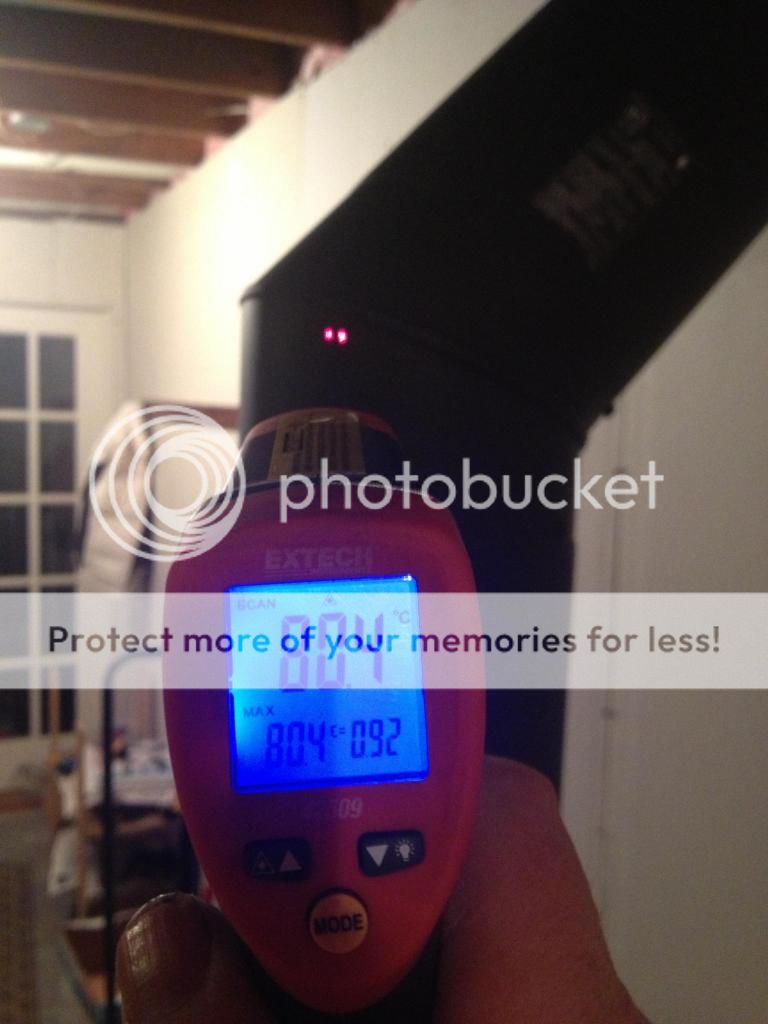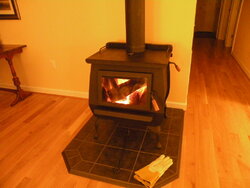Man I cannot get my head around leaving the stove on 3 for a whole hour.
Once I get it active I turn it down. Then the heat starts to roll. When I left the Thermo up higher it just blew the heat up the flue, Cat not lit up, burning the wood instead of cooking it.
Even with the warm ambient, draft robbing weather I couldn't leave it up there. I would be afraid of an 'Over fire' situation.
I am about to find out. I last loaded the stove at 5PM yesterday. Took the wife to the airport this morning early, she is in Arizona visiting one of the kids for a week. Good time to let the stove burn out and get cold. I have run about two face cords of 16" splits through it since late August when I cleaned the flue last. I wanted to get out to a full cord before I cleaned the chimney, but opportunity is knocking.
So I loaded the stove last night at 5PM. I maintained an interior temp of 80-85dF for 23 hours and 36 minutes, at 4:36PM today my interior temp dropped from 80 to 79 dF. At 5PM today I had enough coals left in the ash bed to get the stove going again without needing a match, so my first (almost) 24 hour burn. Yay! My overnight low last night was about +24dF, daytime high was +34dF, stove pretty much cruised with the thermostat set at 1.5. In all fairness, knowing I was about to clean the flue and shovel out the ashes I did open it up a couple or three times to re-arrange the charcoal chunks for complete combustion.
Once the stove burns out and cools off I'll brush the chimney to see what I get. I also want to let the oil furnace burn for a couple days, I got hot water baseboard primary heat and some of that water hasn't moved in six weeks or so.
I do have a magnetic thermometer on my double wall stack. General consensus is the actual temp of my flue gasses is "about" double that shown on my magnetic thermometer. But I do know how hot I had to keep the flue last year to get grey powder instead of shiny black sheets out of the flue, I was looking for "350dF" indicated as kind of a minimum sort of average number to find grey powder in the chimney sweepings last year.
Last year's stove for me was an Ovation Country Flame 2600, 2.6cf firebox, epa cert non cat. This year I am running a BK Ashford 30. When I refill the BK I run it with the door cracked until I see "400dF" indicated on my stack thermometer. That's the point I close the door and let the cat finish getting hot before switching from bypass to engaged. In general I see my indicated stack temp drop from 400 indicated to 325ish or so while the cat finishes heating up, this with the thermostat on 3 and the door closed, in bypass.
Freshly engaged, full load with the thermostat on 3 I commonly see the combustor probe 2/3 up from just barely active toward getting overfired, but my indicated stack temps are down in the 300-350 range. Hours later with the thermostat having been on 1.0 to 1.5 I commonly observe the combustor probe perhaps half a finger width or one finger width up into active, with an indicated stack temp around 200dF.
Based on my experience with a different stove I am seeing uncomfortably low stack temps with my BK. OTOH if my combustor is doing it's job I may be pleasantly surprised when I brush out the chimney. I don't recall if it was my local dealer or the BK manual that said to run the thing wide open for an hour or so with every fill up; I have been doing it but didn't think it up myself.
I want to look around the bypass door with a good flashlight while the stove is cold to see if I have any crud accumulated there. So not Monday night, and I am on call Tuesday night, so probably Wednesday after work I'll open it up and brush it out.







